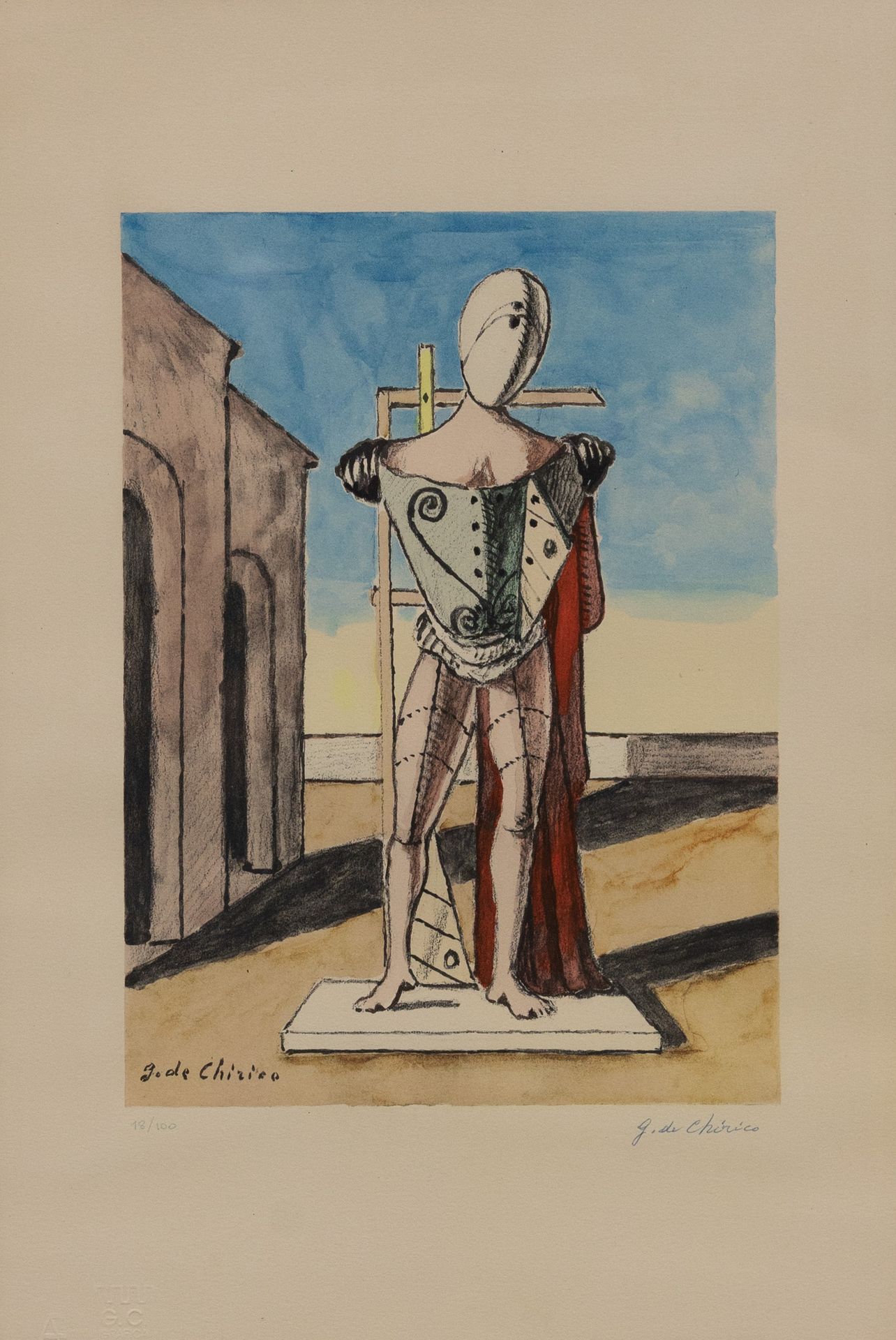Description
GIORGIO DE CHIRICO , 1888 - 1978
GIORGIO DE CHIRICO_x000D_ 1888-1978_x000D_ _x000D_ Metaphysical mannequin, 1977_x000D_. Lithograph ex. 18/100_x000D_ cm. 52x35_x000D_ Signature and numbering on front_x000D_ On the back label "Il torchio di Porta Romana," Milan_x000D_ _x000D_ ORIGIN_x000D_ Private collection, Genoa
You may also like
